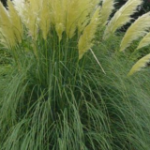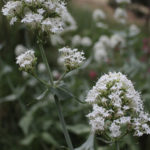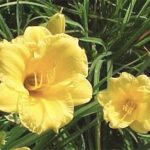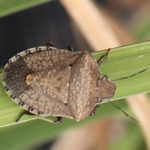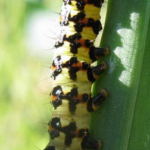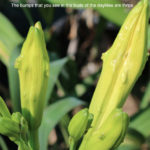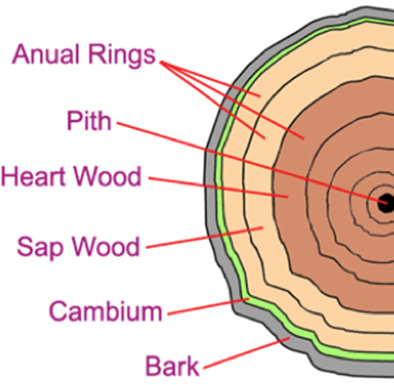
Propagate Plants by Stem Cuttings
Growing Plants From Stem Cuttings to Create a Beautiful Garden
Sometimes seeing a beautiful vibrant garden on the pages of a gardening magazine or in a neighbours yard inspires others to grow their own. So they go out and buy the seeds and start the work of creating their own green oasis. But are sorely disappointed when their blooms do not come out exactly like their neighbours or in the magazine. The simple answer to this problem is using plant cuttings taken from plants that you already know and you will love to see. A cutting is a word used to describe a small part of a plant that has been removed, to be used as a starting point for a new asexual propagation of that same plant. In essence, a cutting is planted to generate a clone of the parent plant. You can be certain if you propagate plants with cuttings your garden will look how you want it to. The first step in asexual propagation is you need to know what type of cutting you need to use, in order to properly grow your plants. There are several types of cuttings you could use. We will cover hardwood, semi-hardwood, and tip/softwood cuttings in this article.
Propagate Plants – How To Take Stem Cuttings
Softwood Tip Cuttings
Softwood tip cuttings are the growing tips of a stem from a mature plant, to create a new sprout with its own distinctive root system. Tip cuttings can be taken at anytime during the year when the shoot tip is growing from a plant, this is when the plant will have lots of growth hormones and the plant will strike within weeks, you will notice this happening in early summer and spring. It’s best to take the actively growing tip cutting from a stem that is 2 to 4 inches long with a minimum of 2 leaves left at the top, removing the rest of the leave down the stem, this should be a flexible brown stem that has been growing during the last several months. Softwood/tip cuttings tend to wilt easily but are the easiest cutting types to achieve rooting from. Plants that are easy to take cuttings from are fuchsias and euphorbias these are good plants to grow from softwood or tip cuttings.
Semi Hardwood Cuttings
Semi-hardwood cuttings are the stem from an adult plant that is stiffer and firmer than those of tip/softwood cuttings. At the end of summer as autumn approaches, mid to late summer is a good time to propagate plants using semi-hardwood cuttings when the new plant growth has started to harden. These cuttings will have fully grown leaves and colour changes, generally from the green of summer to the reddish or brown hues of autumn. It’s best to take a semi-hardwood cutting from a stem that is close to 6 inches long at the same time you will have to remove any leaves from the lower half of the cutting and remove all buds or flowers. You want to do this before the first frost of the autumn season. Plants like the butterfly bush, lavender, rhododendrons, camellias, clematis, hydrangeas azaleas are good for propagating from semi-hardwood cuttings.
Hardwood Cuttings
Hardwood cuttings use the stems of woody plants that have gone dormant during the late autumn and winter seasons. These cuttings are typically taken during mid-winter. Hardwood cuttings, stem cuttings have usually turned completely brown, do not have leaves and will not bend or break with ease. Hardwood cuttings can be used immediately or put away for a later time and can take up to several months to root. To propagate plants like roses, wisteria and grapevines are good to propagate from hardwood cuttings. The best cuttings to propagate plants with are pencil thickness from this years growth,
 cuttings used are no older than one year old that joins two year old growth, cutting at the base of the two year old wood. Cuttings should be quite long at 20cm making a cut away from the bud at the base of the cutting then you do need to wound the cutting with a sharp knife, scissors or secateurs by scraping the hard surface exposing the cambium layer, (pictured right) which is the layer under the bark that is green, this really helps to release the roots out otherwise the cutting can form what looks like a wart on the end of the cutting and this restricts the roots from getting out. Hardwood cuttings can be taken from roses, wisterias, trees, and shrubs.
cuttings used are no older than one year old that joins two year old growth, cutting at the base of the two year old wood. Cuttings should be quite long at 20cm making a cut away from the bud at the base of the cutting then you do need to wound the cutting with a sharp knife, scissors or secateurs by scraping the hard surface exposing the cambium layer, (pictured right) which is the layer under the bark that is green, this really helps to release the roots out otherwise the cutting can form what looks like a wart on the end of the cutting and this restricts the roots from getting out. Hardwood cuttings can be taken from roses, wisterias, trees, and shrubs.
Heel Cuttings
Heel cuttings are for plants that are difficult to propagate or else hard to produce roots to grow. Such cuttings can be created by pulling back a shoot off the main stem that further keeps a heel (a small section of the main stem connected). Cut the heel with a cleaned sharp knife if the heel is too long ready for planting.
Step by Step to Successfully Propagate Cutting
It is very important to always clean your cutting implements by, sterilising them and disinfecting your gardening tools, tables that you are going to use or using to propagate plants with before you start and between each plant cutting, dip your horticultural tools into a sanitised solution, this will prevent and control the spread of diseases such as fungal and pathogens. You can use isopropyl known as IPA diggers isopropyl alcohol to sanitise your garden tools, bleach is another good disinfectant 1 part bleach to 10 parts water. It is best to wipe the solution off the blade of your cutting tools or secateurs after each time you plunge your garden tools into a cleansing solution.
- Choose and use cuttings that are only clean and healthy wood with no marks or discolourations.
- Take cuttings early in the morning, you do have to have a cutting pencil thickness.
- Cut off a section of stem thats required to make your cuttings for the new plant, cut the cutting under a node.
- Soft tip cuttings can be taken at 3 or 4 inches long with 2 leaves trimmed. Semi hardwood cuttings do need to be 5 or 6 inches long. Hardwood cuttings need to be around 8 inches long. Trim the leaves off the lower part of the stem to make the cuttings.
- Hormone powder also can be called rooting gel. The cuttings should be dabbed on the ends of the cuttings with hormone powder or gel before planting them. This will seal and protect the ends of the cutting to promote root development on the end of the cutting.
- Use sterile gritty sharp river sand with some perlite, this is ideal to plant your cuttings in. Sharp sand will stop the cuttings from rotting because the sand will have good drainage. To sterile the sand poor boiling water over the sand this will kill off any fungus or disease that might be in the mix and plant your cutting in the sand only when the sand cools down.
- To plant your cuttings, make a hole in the propagating mix with a pencil and insert the cuttings that have been dabbed in hormone powder on the end, plant deep enough so the leaves are left above the soil. You can plant several cuttings into one pot if you wish.
- Transfer your cuttings into a green house. If you haven’t got one you can make a mini greenhouse by cutting a soft drink container in half and inserting the container over the cuttings this makes a fabulous mini greenhouse but leave the lid off otherwise there will be too much condensation and this can rot of the cutting.
- To root the cuttings you should keep the cuttings warm either using underfloor heating if you have it, on top of a hot water service or a seedling heat mat can be used.
- Water you cuttings only with lukewarm water which is neither hot nor cold. The cuttings do need to be watered every other day so that they are kept damp with a weak solution of seaweed fertiliser such as seasol powerfeed, this also helps the cutting to take root and grow.
- With this method, cuttings should take root within 8 weeks.
- You can start hardening the cuttings off, with a bit more morning sun until it is time to plant the cuttings in your garden. Once the cuttings have a strong root system, and your climate is free of frost, you can transplant your cuttings / seedlings into your garden.
It is very rewarding to grow your own plants from cuttings, you can do this to replace your old plants or by introducing new plants to your garden.
Which one is for you?
Propagate plants using the wood cuttings method can prove to be easier than growing your garden from seed. You can produce plants that give you the look you want because of their asexual reproduction from stems. Which ever cutting type that you decide to use can yield amazing garden results that are a clone from the plant you took the stem cutting from, you can try propagating your favourite daisy bush or salvia plant, this is a free and cheap way to make plants for your garden.


